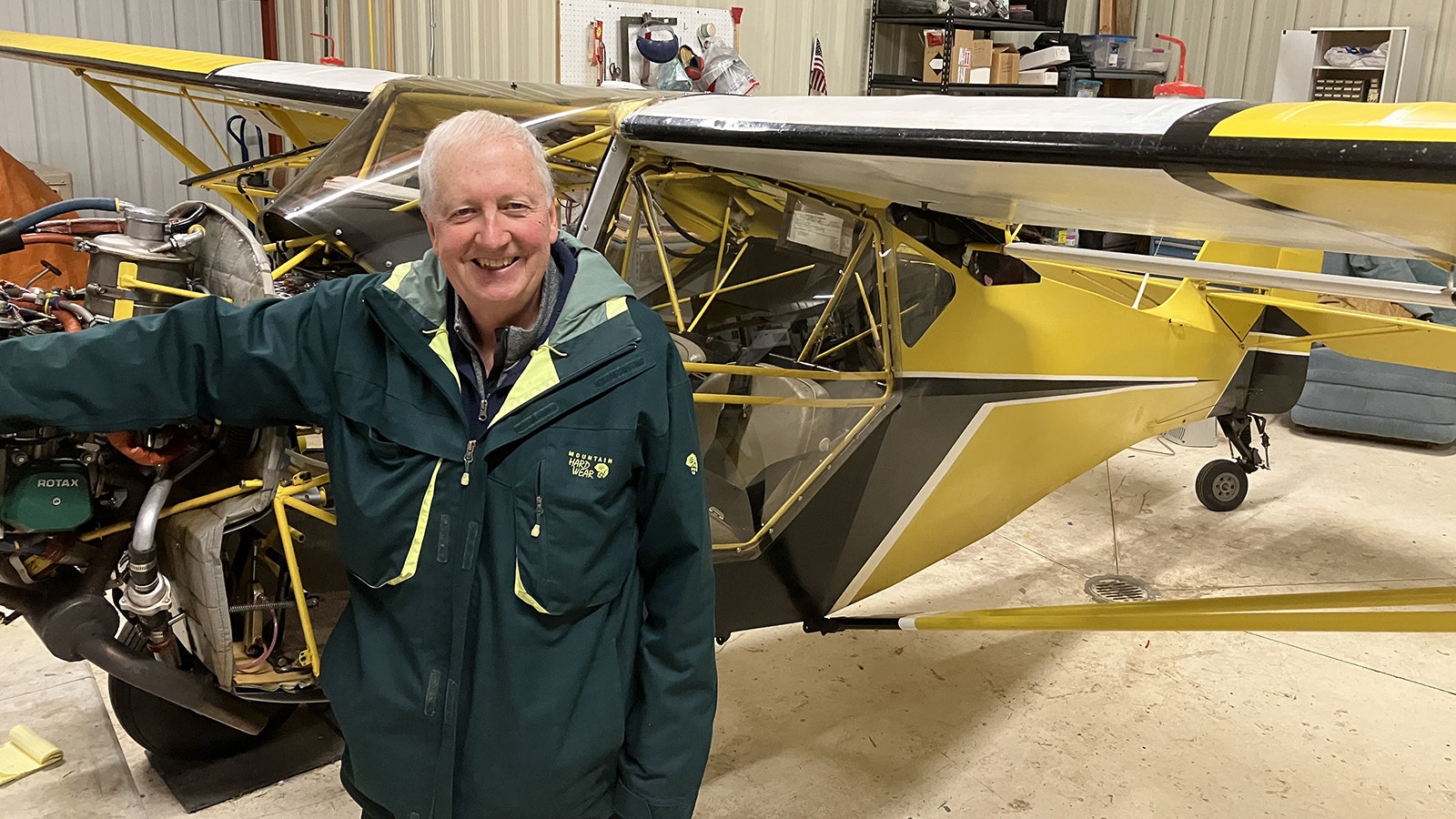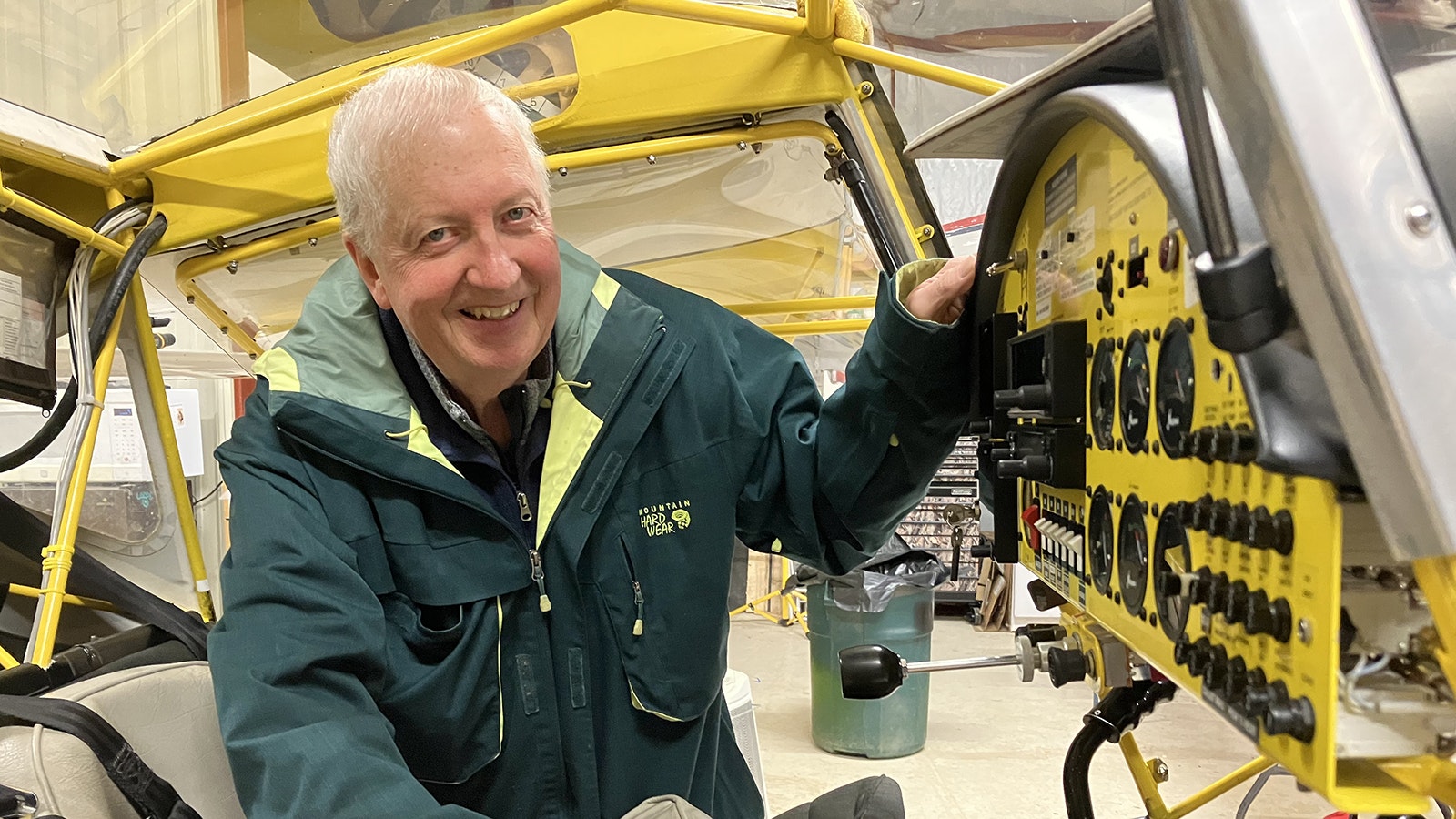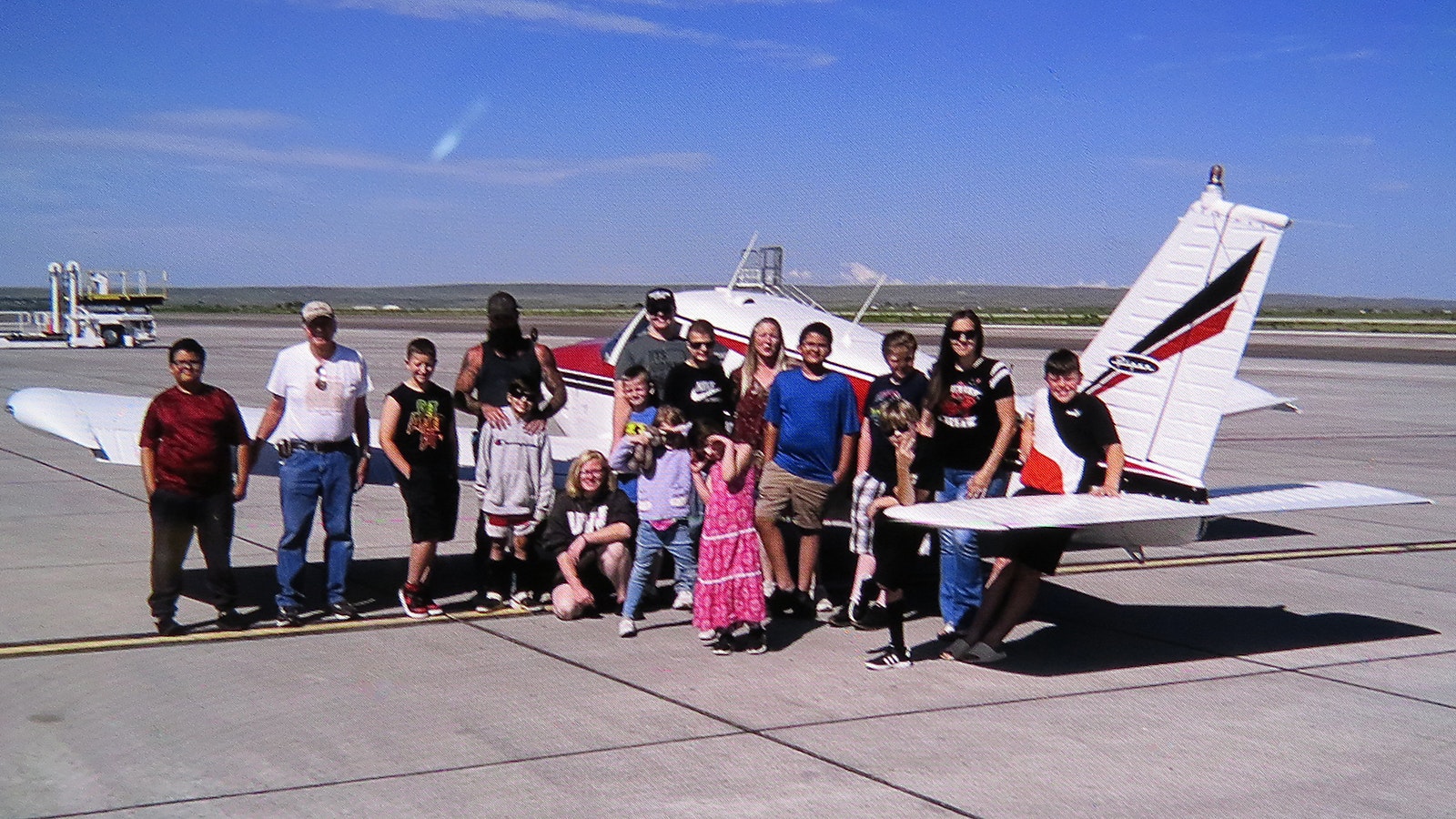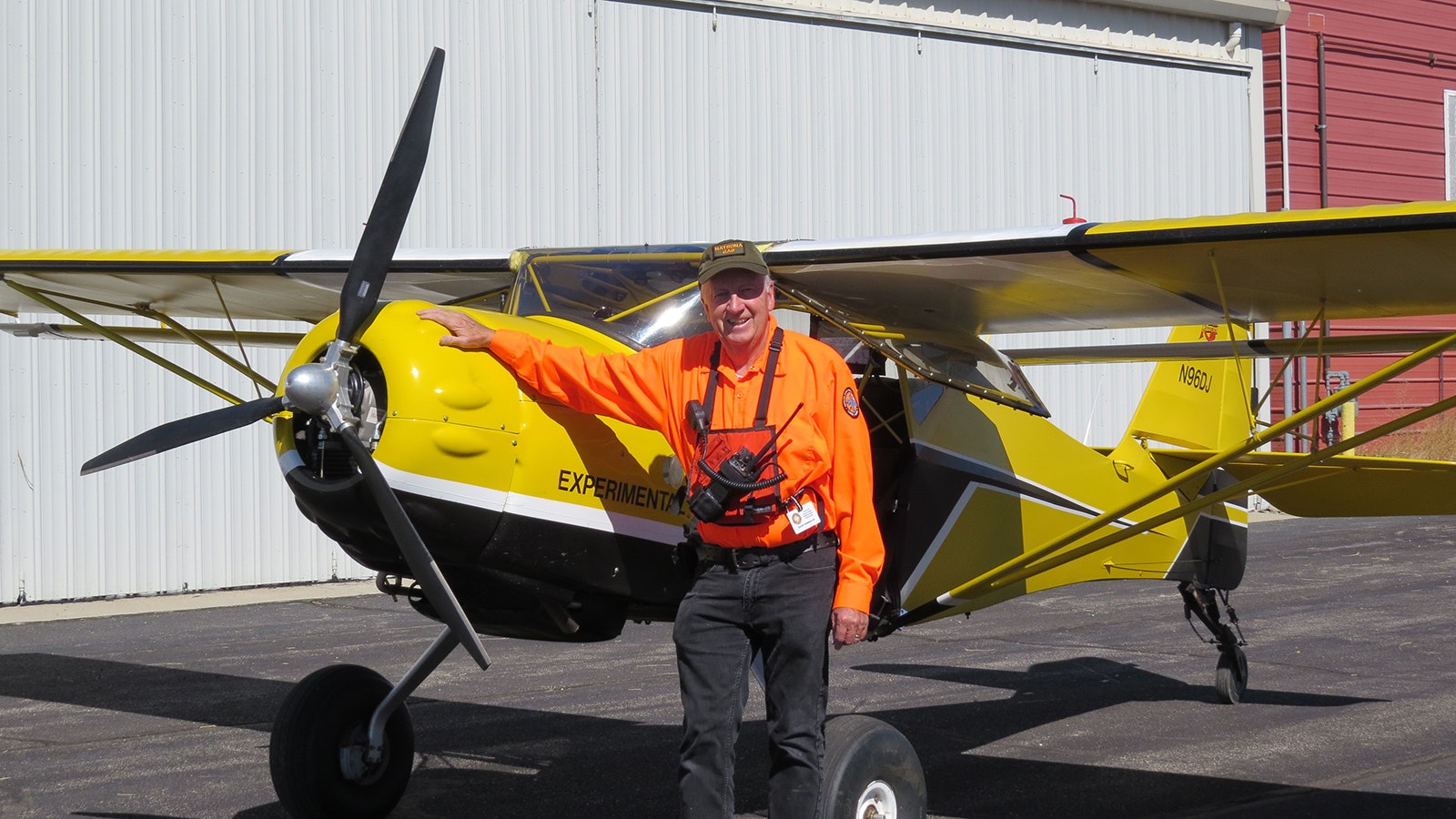CASPER — Some of Dallas Chopping’s earliest memories are of sitting on his dad’s knees a few thousand feet in the air, his little hands on the controls of a Cessna 170.
“My mother always said anytime we would get headed for the airport, as a 3-year-old, I would start screaming and raising a ruckus about wanting to go for a ride,” he said. “My dad would just look at my mom and say, ‘Well, I gotta take the kid for a ride.’”
Since then, the now 70-year-old Casper native who got his private pilot’s license as a high school senior and would be doing acrobatics with his own plane at 17, has had a real ride as a corporate pilot flying turboprops and jets. He also teaches others how to navigate through the air in an often wild and windy Wyoming.
Chopping said he grew up helping his father do crop dusting across Wyoming and adjoining states. He would stand in the field marking the route for his father as he roared above dumping diesel and Dow Chemical’s 2,4D on sagebrush so that grasses could grow on rangeland.
“He would make a pass and then you would pace over, and he would make another pass,” he said. “That’s how you would keep track of where you were at.”
The job would cover him in the diesel fuel and chemical raining down.
“It had a real strong odor to it. When we came to town we absolutely stank,” he said. “One time we had to go to a bank and make a deposit, and we were in this long line and it had all these flowers along there. Anyway, I came back the next day and all the flowers had died from the 2,4D coming off of us.”
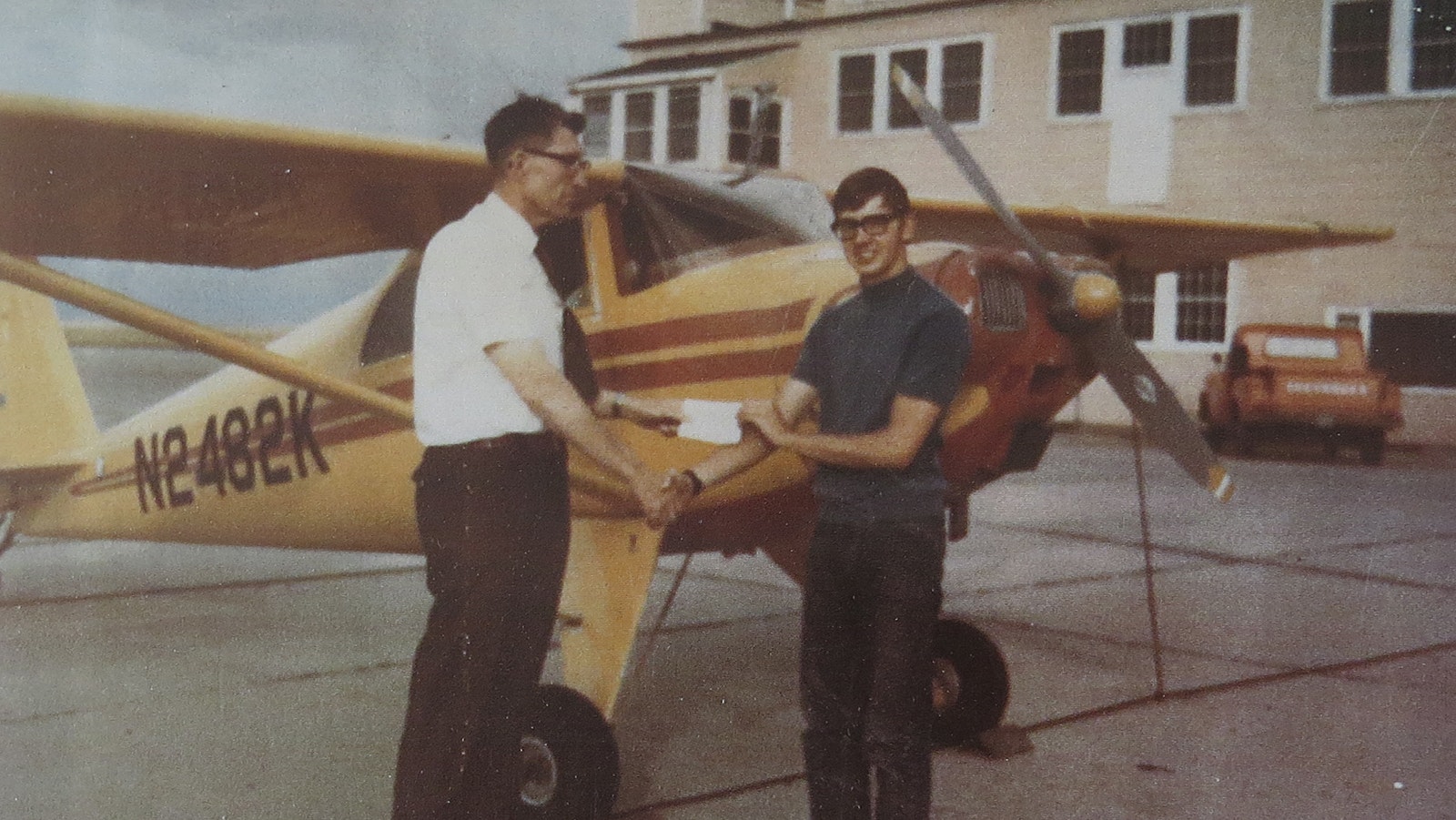
First Plane
In high school the early 1970s, he bought a 1947 Luscomb and learned to fly. Chopping’s dad taught him to master elementary aerobatics and later he learned from another man who showed up at his dad’s hangar one day.
“I came in and my dad said, ‘Well, why don’t you take this elderly gentleman up and crank the tail,’ which means do some spins and aerobatics,” he said.
So, the young Chopping led the visitor out to his little two-seat aircraft.
“I did some snap rolls and did some spins and things, and he was just kind of yawning and unimpressed and he said, ‘Well, let me take it,’” Chopping said. “And he took it and was doing eight-point rolls. and anyway we spun down to low altitude and landed.”
The guy gave him a business card and Chopping learned that his passenger did professional airshows in that type of aircraft.
“So, it was kind of a set up for me and he became my aerobatic instructor,” Chopping said. “I was probably 17 at that point.”
As part of the crop-dusting crew after getting his pilot’s license, Chopping said his dad would let him fly the powerful Pawnee 235 crop duster between jobs. He said with it empty, the plane was like a hot rod, and he would take advantage of its speed.
The Airshow
One day while in Kaycee, Wyoming, getting ready to fly the aircraft, a small group of people had gathered around the airport giving him a little audience. He decided to do an impromptu air show.
“I had this old Air Force helmet on and flipped the visor down and was walking around pulling on my leather gloves like I was Chuck Yeager,” he said. “My intent was I was going to fire that airplane up and it had enough power that you could lift the tail off the ground with the sheer strength of the engine. So, I was going to lift the tail up and go down the runway and pull a near vertical for 1,000 or 1,500 feet.”
He fired the plane up, revved the engine to scream down the runway and released the brakes.
“All of a sudden I just started flying around to the left,” he said. “In my haste to be an airshow pilot I had forgotten to untie the left wing and everybody there could see that was about the stupidest thing that you could do.”
He managed to stop the airplane wrecking the plane and learned a big lesson in humility and preflight inspections.
“Pride goes before the fall,” he saidl
Chopping’s life goal was to become an engineer test pilot. He spent two years at Casper College and then went on to Arizona State University to get his aeronautical engineering degree. While at Casper College, he got his instructor’s rating, and then qualified on instrument and twin-engine aircraft.

Corporate Pilot
It was also while at Casper College that the local utility, Pacific Power and Light, needed a full-time co-pilot for its corporate aircraft for 30 days because one of the company pilots needed a medical procedure. Other local pilots didn’t want to take a job for just 30 days.
Chopping did.
The job stretched to six months, and he found himself flying executives from Casper to Rock Springs where the company was then building its Jim Bridger Power Plant. The time on the ground waiting for the return flight gave him plenty of opportunity to continue his engineering homework. He arrived at class in Casper enough “to keep the teacher happy” and also gained a lot of experience in the air.
“Every summer after that when I would come home from school, they would let me fly as a pilot when their pilots would all go on vacation,” he said. In Tempe at Arizona State, Chopping got a job pulling gliders up in the air on weekends.
After college, Pacific Power made him an offer that he could not refuse. The company wanted him as one of its corporate pilots. That led to 20 years of service and a move Salt Lake City. He flew twin-engine King Air turbo props and then Citation business jets ferrying executives and engineers around the country.
There’s Flying, Then There’s Flying In Wyoming
Learning to fly in the West gave him experience with crosswinds and high-density altitude that saps engine power — experiences that he continues to pass on to other pilots today.
After the power company was bought out, Chopping lost his job. He moved back to Casper and worked for a wealthy oilman for several years flying him and then other business executives as a corporate pilot. Then Chopping retired.
After retirement, he bought his current Kitfox Aircraft that he partially put together. It features two seats, side by side, and can cruise about 110 mph.
“The doors are all plastic, so it makes a real good observation airplane,” he said.
Search And Rescue
Chopping has spent time helping the Civil Air Patrol, and in recent years has flown Natrona County Sheriff’s Department search and rescue missions as a volunteer. He continues to serve as a freelance instructor pilot and spends a lot of time flying to ranches around the state teaching ranchers how to fly “backcountry taildragger” aircraft.
“There are not a lot of instructors around who can do that,” he said. “A lot of ranchers have dirt strips. I will teach them how to fly out of their ranches.”
He and several fellow pilots also enjoy flying to backcountry dirt strips created by the fire service in Idaho and Montana for fire missions, but when there aren’t fires are great for weekend camping excursions.
Flight safety remains a key part of what he shares with other pilots. He was scheduled this weekend for a lesson on mountain flying with a group of pilots from the Experimental Aircraft Association.
Ice, winds, snowy runways and the high-density altitudes of Wyoming are all factors that he never takes for granted.
The Disaster
As a teen working with his dad, Chopping said he witnessed how quickly disaster can strike as his dad sprayed in the mountains near Rawlins.
A man came running to where Chopping and his twin brothers were providing support for his dad, yelling that he just saw the plane crash.
At first, Chopping just thought the man saw his dad go down to spray in a valley and that the man had assumed Chopping’s dad had crashed. Chopping thought the plane would pop up momentarily.
Then they saw the smoke and fire rising.
“I thought to myself, ‘My God, get out of that airplane, she’s on fire.’ My brothers and I jumped in the pickup and ran over there,” Chopping said. “My dad had crashed, and he had managed to get himself out, but the whole front side of his body was burned third-degree. His ears were burned off, his nose was burned off, his skin was coming off of him like a wet towel.
“We loaded him up in the pickup and took him into Rawlins. And he said when he was in that wreck, and he was unconscious, he heard my voice say, ‘Oh God, get out of that airplane, she’s on fire.’ That’s when he woke up” and crawled out of the wreckage.
Chopping was 2 miles away from the crash when he had yelled for his dad to get out of the plane.
His dad, a veteran, was flown to Texas for treatment. Prayers for a miracle were answered and his father astounded doctors by recovering. He would fly again, but never for a living.
“You have the love of flying, but if things don’t go right, it is serious consequences for you and your passengers,” Chopping said. “It’s a serious business. It keeps you motivated to stay humble, to stay alert, to take nothing for granted.”
His life in the air that began on his dad’s knee will continue as long as he’s able.
“It kind of gets in your blood,” Chopping said. “You just wouldn’t be fulfilling your purpose, it’s kind of like the difference between a caterpillar and a butterfly.”
Dale Killingbeck can be reached at dale@cowboystatedaily.com.

